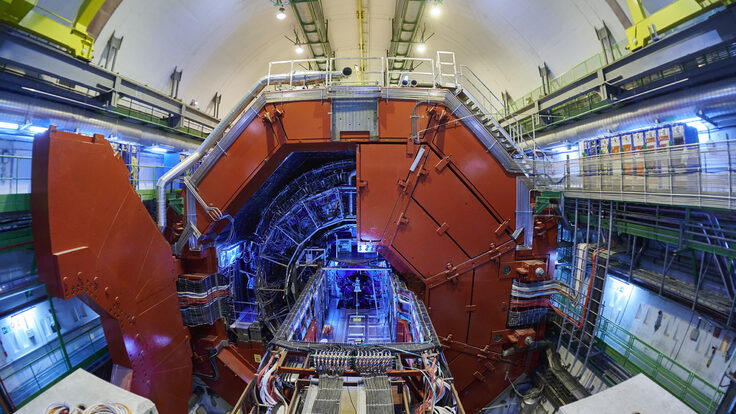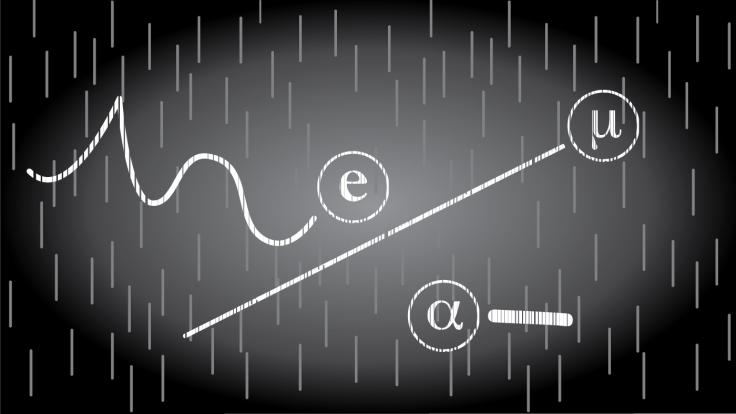
John Womersley, chief executive officer of the U.K.'s Science and Technology Facilities Council. Photo: STFC
During a recent symposium at Fermilab, a speaker took the stage to defend government investment in basic science. He used an odd tactic: He called particle physics unreasonable.
John Womersley, chief executive officer of Britain’s Science and Technology Facilities Council, was referring to a saying by the eminently quotable George Bernard Shaw. Shaw said that a reasonable man adapts to society, but an unreasonable man insists that society adapt to him. Therefore, Shaw argued, all progress depends on unreasonable people.
“Particle physics is unreasonable,” Womersley said at the June 11 symposium celebrating the now-retired Tevatron particle accelerator. “It makes unreasonable demands on technology.”
But scientists are persistent, he said; when they don’t have the things they need to conduct an experiment, they take it upon themselves to create them.
“And when those technologies, those inventions, those innovations happen,” Womersley said, “they spread out into the economy, and they generate a huge impact.”
In a back-of-the-envelope calculation that, he admitted, involved just “a couple of weekends of Google and Wikipedia,” Womersley attempted to estimate the financial impact of Fermilab’s Tevatron.
The Tevatron was completed in March 1983 and ran until September 2011. Womersley considered the cost of constructing and operating the accelerator and its experiments – about $4 billion in today’s currency – and found that, over its lifetime, the Tevatron had returned its investment roughly tenfold.
The return consisted of three major benefits, Womersley said: the training of more than 1,000 Ph.D. students, the stimulation of industry in superconducting magnet technology and the stimulation of industry in computing.
According to the U.S. Census Bureau, the value to the economy of one Ph.D. student was $2.2 million in 2002, $2.8 million in today’s currency.
“If you’re a Ph.D. in physical science, you are worth about $2.8 million more to the economy than you would be if you didn’t have that qualification,” Womersley said. “If it’s worth it to an employer to pay you that much more, presumably it’s because you increase their profits by even more than that.”
Records show that 1,414 students earned their Ph.D.s at experiments at the Tevatron, creating a financial impact of about $3.96 billion.
“You can pretty much say that the Tevatron has paid for itself simply by training people over all those years,” Womersley said. “But that’s not enough – because there are cheaper ways to train Ph.D. students than building a superconducting accelerator.”
So Womersley moved on to superconducting magnets. The Tevatron represented the first installation of mass-produced superconducting magnets on an industrial scale. Tevatron scientists tackled many previously unsolved engineering problems in creating the superconducting magnets that steered particle beams around the accelerator.
Superconducting magnets now play a part in power generation and power transmission. They also are an essential component in medical imaging, an industry worth $5 billion per year. Womersley argued that, if industrialization of superconducting magnets at the Tevatron pushed industry forward by just one or two years, it led to a payoff of between $5-10 billion.
Lastly, Womersley considered computing. Tevatron experiments demanded sharp increases in computing power to keep up with the larger and larger datasets scientists needed to process and analyze. The industry is estimated to be worth $150 billion per year, Womersley said. If Tevatron scientists accelerated the development of the computing industry by even three months, that would mean it had a financial impact of about $40 billion.
According to the balance sheet at the end of Womersley’s exercise, $4 billion went into the Tevatron and roughly $50 billion came out.
The calculation is imprecise, but, Womersley said, “it confirms at least my gut feeling that there is a plausible case that it has been a very, very important economic driver over the last few decades.
“And it would be interesting if somebody could pay somebody to do this properly, as I make no claim that I’ve done this properly.”
Any takers?
You can watch Womersley’s presentation here, starting at 2:13.






